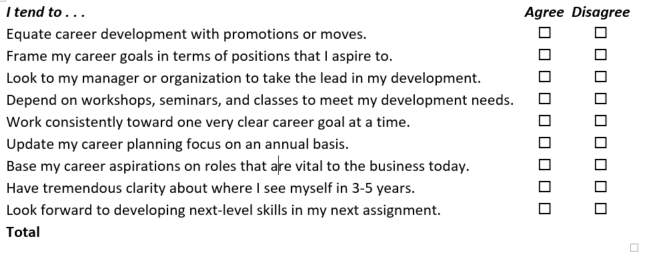ATD Blog
Career Brilliance—Career Resilience
Wed Sep 05 2018

This is the first of a three-part series designed for L&D professionals (and really anyone) who care deeply about their career development and who want to position themselves for ongoing success and satisfaction at work. In this series, we’ll explore the constraints and the changing business landscape that many of us feel are holding us back through a different and more possibility-filled lens. We’ll consider the interrelated roles of self-reflection, feedback, and “learn-gevity”—a commitment to lifelong learning. And, we’ll look at how adopting an agile career mindset can support a more dynamic approach to development planning—one that can flex as fluidly and quickly as business seems to today.
So, let’s get started!
Part 1: The Case for Career Agility
A tagline from a 1980s advertising campaign asserted, “This isn’t your father’s Oldsmobile,” suggesting a dramatically updated take on a traditional vehicle. Years later, I’d suggest that career development might benefit from a similar rebranding effort—because this isn’t your father’s professional landscape.
The past decade has ushered in a dramatically different workplace. Yet many employees and leaders alike have chosen to look the other way (or perhaps hold their breath waiting for this to pass). This avoidance of reality must end. So, fix your gaze and exhale, because the world of work has changed.
The career ladder is dead. That comfortable, predictable hierarchical climb is not likely to return any time soon. While some will lament its loss, those who will be successful in this evolving landscape are actually celebrating the liberation it offers. They see that the confining walls and mirrors of the old career funhouse maze are being lifted. What’s left is greater visibility, clarity, and opportunities in all directions.
Career paths are static. The career pathing schema of the past can’t keep pace with the current workplace. It’s the difference between navigating with old Thomas Brothers’ Guide Map Books and Google Maps. A more dynamic, option-filled approach to development is required to keep pace with ever-changing “road conditions.” For instance, just 10 years ago, no one held roles such as social media manager, market research data miner, app developer, or chief listening officer—because they didn’t exist. And, 85 percent of the jobs that will exist in 2030 haven't yet been invented, according to the Institute for the Future (IFTF). Given this rate of change, many published career paths will lead to unproductive dead ends.
The gig is big. Our fundamental relationship with work is changing. With 16 million people engaged in contingent or alternative work, employment is taking on a new fluid, and even fractured, complexion. How work is organized and where and how it happens are all changing as more and more individuals piece together patchwork quilts of work assignments versus taking on a traditional nine-to-five job.
Information and learning are ubiquitous. From formal training opportunities to on-demand resources to using YouTube or Khan Academy to address a just-in-time need, development opportunities abound—not just within the workplace, but increasingly outside as well. The lines are blurry in terms of where learning can happen.
All of this can feel unnerving and threatening. Or, it can offer tremendous opportunities—for those who embrace and develop career agility.
What’s Your CAQ (Career Agility Quotient)?
Thriving in today’s environment requires greater and greater levels of career agility. So, how much agility do you bring to your career thinking and planning? Take this quick quiz.

Total your responses for each column. The more statements you disagreed with, the greater your level of career agility!
7-9 Disagree responses: You are a career ninja—flexible, nimble, and able to respond and thrive in today’s workplace.
5-6 Disagree responses: While some elements of your mindset will support career agility, others may slow you down and hold you back from the success you crave.
4 or fewer Disagree responses: It’s time to update and stretch your thinking, which may be out of line with what’s required for careers to thrive in today’s workplace.
The statements above reflect a mindset that served many of us well in the past, but no longer align with the reality of today’s workplace. Confronting and evolving these practices is the first step toward developing a more agile approach to career development.
In the next installment of this blog post, we’ll delve into specifically how to elevate your CAQ to ensure the most brilliant and resilient career possible.
